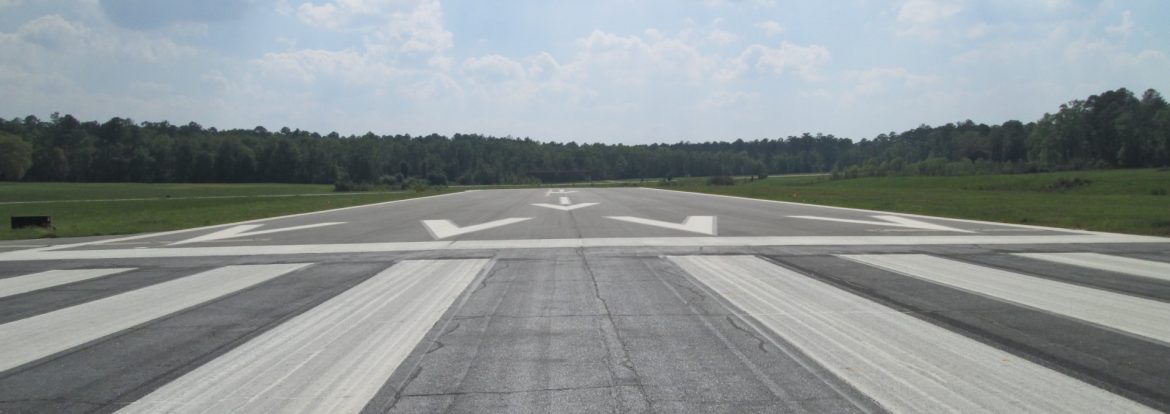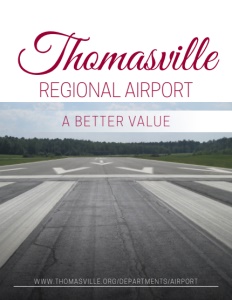Thomasville Regional Airport
A better value
Business View Magazine interviews Robert Petty, Manager of the Thomasville Regional Airport, as part of our series on regional airports in America.
Thomasville Regional Airport is a city-owned, general aviation airport located seven miles northeast of the central business district of Thomasville, a city in Thomas County, Georgia. It was built in 1941, and was quickly leased to the U.S. War Department for the duration of World War II. It became the Thomasville Army Airfield in 1943, and was utilized by the Third Air Force for reconnaissance and fighter pilot training. After the war, the federal government abandoned the field and the local community college moved out there for a short period and provided technical training for area residents.
In 1961, Thomas County and the City of Thomasville reopened the airport as the Thomasville Municipal Airport, catering to local plantation traffic, which usually peaks during the area’s annual quail season from November to February. Today, the Airport covers an area of 1,301 acres; it has two asphalt paved runways: 4/22 is 6,004 by 100 feet, and 14/32 is 5,000 by 100 feet, which experience approximately 12,500 annual take-offs/landings. It has seven employees and it gets some city funds for its operations, with the county maintaining its roads, easements, and some of its outlying property. It is home to 52 home-based aircraft – a combination of corporate and private recreational planes and jets.
In 2017, the Airport completed a 30,000-sq.-ft. hangar complex for corporate aircraft, and a plan for the city to build six new box hangars for general aviation aircraft was recently changed, according to Airport Manager, Robert Petty. “The city decided that it would be better to build an additional apron area to support larger aircraft, because the fuel revenue wouldn’t be sufficient enough to cover the hangars,” he explains. “So, they decided to move forward with corporate hangar construction instead. What they’re looking at now is what we’re calling the southwest quadrant development area; it’s a project that’s on our ACIP (Airport Capital Improvement Plan) for $3.1 million for the construction of a taxiway and apron that would support hangar construction, primarily, through ground lease. Although the city is contemplating building its own hangar for transients, the rest of the apron edge would be taken up by tenants who purchased a ground lease with the intent of building.”
A recent project that did go according to plan was a 500-plus foot extension to primary runway 4/22, which will allow larger corporate aircraft to make safer landings and takeoffs during hot and humid days and times of inclement weather. Currently, the runway has a displaced threshold, which means that a portion of it can be used for takeoffs but not for landings. “Currently, because of some issues with the property owner, that land has not yet been purchased,” says Petty. “They are still interested in selling the property to the city and the city will move forward once that’s done to clear-cut the trees and open up the threshold all the way to 6,004 feet. So, we’ll recapture that 500 feet that’s currently being used as an overrun for Runway 22.”
Another recently completed project at Thomasville was the rejuvenation of both the primary and secondary runways. “That project is finished and gives the runways an additional life of five to eight years,” Petty notes. “Part of the rejuvenation process was to do a crack seal project before they sprayed the material with a product to activate the binder in the asphalt onto the runway. It’s the same runway, but now it’s crack-sealed and rejuvenated. It also included the installation of PAPI (Precision Approach Path Indicator) lights on runway 32, and there’s also some remarking that was done on both runways.”
“The big project that we’re looking at for later this year is an apron joint seal project, which looks at the apron in front of the FBO and about half of the general aviation hangars,” Smith continues. “Any broken concrete slabs would be removed and replaced. Otherwise, if there are just cracks, they’ll do a crack seal. That project is being scheduled outside of quail season, which is our big season. We’re also looking at additional approaches for 14/32. That’s going to take about 18 months, and it’s something we’re looking at in the near future; probably about a year and a half.
“Then, the big project coming up is the line of sight project on our primary runway between the end of Runway 4 and 22. From one side, you can’t see an aircraft sitting on the other side. The FAA has an initiative where they’re looking at airports where the primary runways have line of sight issues and they’re making them remove any humps in the runway, or raising the elevation at the end of a runway in order to remove that line of sight issue. So, that’s coming up in 2023. Some of the development that we’re doing on the secondary runway is going to support the transference of operations from the primary to the secondary runway during construction. That is the reason for the additional GPS approaches and the inclusion of the PAPI system on 14.”
Regarding competition from other area airports, Petty says that the nearest ones are Tallahassee International Airport, Valdosta Regional Airport, and Southwest Georgia Regional Airport in Albany. “They’re all about 60 miles from this Airport – one to the south, one to the east, and one to the north,” he remarks. “They all have commercial traffic and they’re all full-service for general aviation. However, I believe we provide better access to the plantations – there are 70 plantations in Thomas County, and we are general aviation-friendly, supporting both light and corporate aviation with easy access to and from the ramp and other airport facilities.”
“Our customer service and our corporate culture give our customers the opportunity to experience Southern hospitality,” he adds. “The folks who work here are career linemen and the office staff work for the city, so you’ll see the same faces year in and year out. And that’s relatively unique. I’ve worked at other FBOs that were more corporate-oriented and you kind of lose that quality of customer service, and friendliness, and the warmth that you would typically get from a family-run company. Also we try to stay below the commercial airports’ fuel prices, so I think we’re a better value.”
AT A GLANCE
WHO: Thomasville Regional Airport
WHAT: A general aviation airport
WHERE: Seven miles northeast of Thomasville, a city in Thomas County, Georgia




